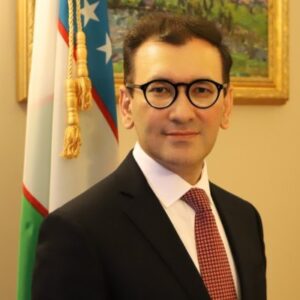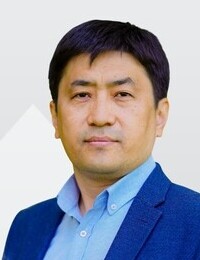ASTANA – Leaders from Central Asia and the European Union will gather in Samarkand on April 4 for a landmark summit. With a packed agenda, both sides are expected to launch a strategic partnership.
“We are in Samarkand for the first-ever EU-Central Asia Summit. Tomorrow, we will launch a new Strategic Partnership with Central Asia. It means we can rely on each other. And in today’s world, this matters more than ever,” European Commission President Ursula von der Leyen wrote in a post on X as she arrived in Samarkand.
The agenda ranges from trade and investment, critical raw materials, and digital connectivity to people-to-people ties. To understand what this summit, deemed by officials as a new chapter, really means in practical terms, The Astana Times spoke to experts who have been closely following EU – Central Asia relations.
Regional standpoint
For Central Asia, the summit is a moment to “move from rhetoric to action to institutionalize cooperation, launch new initiatives, and reinforce a long-term vision of shared growth, stability, and interconnectivity,” Javlon Vakhabov, managing director at the Tashkent-based International Institute for Central Asia, told The Astana Times.

Javlon Vakhabov. Photo credit: Vakhabov’s X account
“Expectations are centered around achieving concrete outcomes, particularly in the areas of trade, investment, infrastructure, green energy, and technological development. We in the region hope the summit will result in actionable agreements that expand market access for Central Asian goods within the European Union while also encouraging EU-backed investments in critical sectors that support sustainable economic growth,” he explained.
Another area of focus, Vakhabov noted, is an institutionalization of political dialogue.
“Central Asian states seek the establishment of regular, structured engagements at various levels—from high-level summits to working-level expert consultations—that ensure continuity and coherence in EU–Central Asia relations,” he added.
Experts note the importance of delivering tangible and practical results. When asked about what a meaningful partnership looks like from a regional standpoint, Vakhabov describes it as one “grounded in mutual respect, shared strategic interests, and a commitment to producing tangible benefits” for people of both Central Asia and the EU.
“It is not merely about dialogue but enhanced cooperation —underpinned by high-level political engagement, sustained inter parliamentary exchanges, and active expert-level collaboration,” he said.
High-level political engagement has been robust in recent years, with top EU officials visiting the region. Among the latest are High Representative for Foreign Affairs and Security Policy and Vice-President of the European Commission Kaja Kallas, and EU Commissioner for International Partnerships Josef Sikela.
Vakhabov pointed out that a “truly meaningful partnership” should also cover security cooperation, including efforts to counter terrorism, extremism, transnational crime, and cyber threats. “Beyond economics and security, an effective partnership should foster people-to-people ties through expanded cooperation in education, academic research, and cultural exchange. This societal dimension is key to building trust and understanding between the regions,” he said.
Connectivity is a shared priority
In recent years, the EU and Central Asia have achieved notable progress in promoting connectivity. EU is keen to advance its 300 billion euro (US$332.2 billion) Global Gateway initiative in the region. The Trans-Caspian International Transport Route (TITR) is a cornerstone of that effort, with a goal to turn it into a competitive and efficient route connecting Europe and Asia in no more than 15 days.

Shairbek Dzhuraev, PhD, is the co-founder and president of Crossroads Central Asia. Photo credit: crossroads-ca.org
In January 2024, the EU announced its commitment to mobilize 10 billion euros ($11.1 billion) from international financial institutions for the development of the corridor. A few months later, a TITR coordination platform was launched in Astana. The EU is also ramping up its support for the development of the corridor through several regional initiatives, including a 30 million euro ($33.2 million) regional transport program for Central Asia and a 28.4 million euro ($31.4 million) Central Asia Prosperity Program.
While these initiatives are crucial, their impact will remain limited without the backbone of reliable infrastructure to support them.
“The EU should adopt a balanced strategy that supports both hard infrastructure, such as transport corridors and railways, and soft infrastructure, including harmonized regulations, standardized rules, and initiatives to promote political stability and peace. In other words, full-fledged connectivity requires the EU and Central Asia to look beyond physical investments,” Shairbek Dzhuraev, president of Crossroads Central Asia, a Bishkek-based research institute, said in a comment for this story.
He suggested that lasting connectivity demands the EU to move beyond bilateral ties and take a more hands-on role in fostering regional coordination. This means supporting Central Asian countries in aligning infrastructure strategies, harmonizing customs procedures, and building meaningful cross-border collaboration.
Energy and critical raw materials
Сonnectivity in Central Asia is also deeply intertwined with the region’s energy transition. As countries look to modernize their infrastructure, the shift to clean and sustainable energy has become a parallel priority.

Vakulchuk’s geographical specialization is Ukraine, the countries of Central Asia, Kazakhstan in particular, Myanmar and the other countries of Southeast Asia. Photo credit: nupi.no
Roman Vakulchuk, head of the Research Group for Climate and Energy at the Norwegian Institute of International Affairs (NUPI), observes the EU’s growing investment presence in Central Asia’s clean energy sector since 2022.
“I expect the EU will be expanding its support to the region in the future in terms of investment, knowledge and education. In my view, the priorities of both players are well aligned, given the leading role of the EU in global climate change mitigation and Central Asia’s own ambitions to achieve carbon neutrality,” he told The Astana Times.
He mentioned Kazakhstan’s pledge to carbon neutrality by 2060, which was followed by Uzbekistan setting 2050 as a deadline.
“Both regions, however, are experiencing challenges in the ongoing energy transition and require effective plans and policy measures to scale up the adoption of renewable energy and phase out fossil fuels,” he said.
The next five years will be critical for Central Asia’s success in meeting its carbon neutrality targets. In this context, Vakulchuk said the EU has an opportunity to play a key role by supporting the development of effective energy transition policies in the region. For the EU, it is also a strategic and supply-driven move to diversify its own supply chains. According to data from the Eurostat, EU’s statistical office, 94% of EU imports of rare earth elements came from China, Malaysia and Russia combined as of 2023.
The International Energy Agency expects demand for critical minerals to grow, given the surge in clean energy technologies. In 2023 alone, lithium consumption increased by 30%, while demand for other key minerals—including nickel, cobalt, graphite, and rare earth elements—also grew between 8% and 15%.
In this context, however, Vakulchuk describes the EU as a “latecomer in the global race for Central Asia’s resources.” While the EU has stepped up its engagement, its investment volume and number of industrial projects still lag behind China’s far more active presence in the region.
Central Asia, he noted, could advance its own agency by crafting forward-looking resource strategies.
“I believe that the Central Asian governments could develop regional and also country-specific smart resource strategies that would identify niche commodity markets and sectors for each large investor to make sure that geopolitics is sidelined by economic pragmatism and all the parties benefit from resource cooperation and contribute positively to the global energy transition,” he explained.
Geopolitics included
While many experts interpret the EU’s engagement in Central Asia as a move to counter that of Russia and China, the region’s two biggest neighbors, both of which maintain deep economic, political, and security ties in the region, that narrative does not always give the full picture.

Dr. Lemon’s research focuses on the transnational dimensions of authoritarianism, with a focus on Central Asia, Russia, and China. Photo credit: bush.tamu.edu
“I think EU engagement with Central Asia is partly about countering Russian and less so Chinese influence in Central Asia. But this framing does not capture the whole dynamic. First, the EU cannot really compete with Russia and China in the region. Their influence is far stronger. Second, Central Asia has something to offer Europe. It is a source of key resources, including uranium, critical minerals and hydrocarbons, offering an alternative to Russia and a way to diversify supplies. For Central Asia, Europe offers an alternative market for goods via the Middle Corridor, which both sides are seeking to develop,” said Edward Lemon, a research assistant professor at Texas A&M University, in a comment for this article.
When asked about the EU’s value-based diplomacy and its efforts to promote good governance and human rights in the region, Lemon said it has been an “uphill struggle.”
“There are certain areas, like countering trafficking in persons or domestic violence, where some progress has been made. The EU should prioritize areas like this where progress is feasible. Such an approach is increasingly important as we see the U.S. withdrawing support for programs that support human rights and good governance,” said Lemon, whose research focuses on Central Asia, China and Russia.
As Central Asian and EU leaders gather tomorrow in Samarkand, expectations are high, but so are the complexities. If both sides are honest and realistic about their goals and expectations, the Samarkand gathering could definitely become more than a diplomatic milestone but a truly new chapter.


